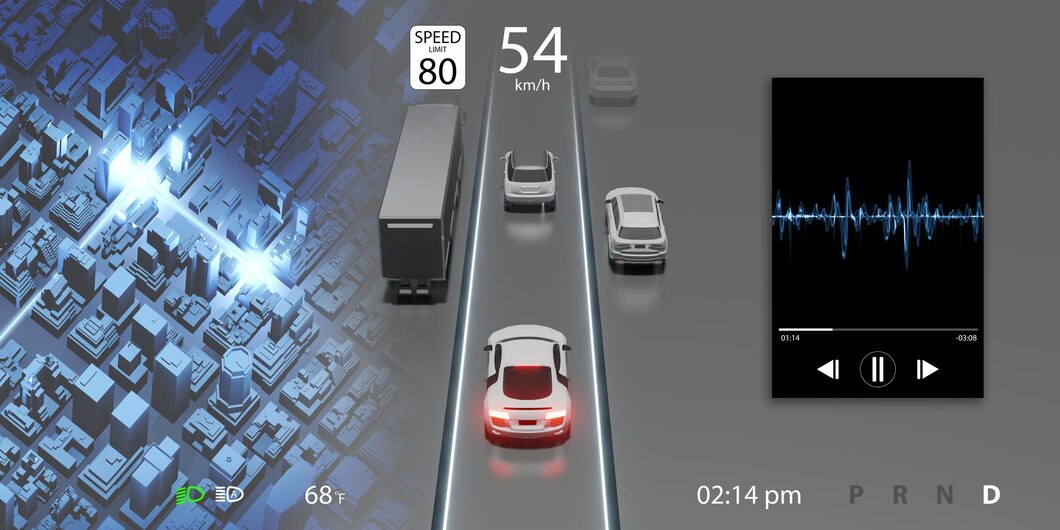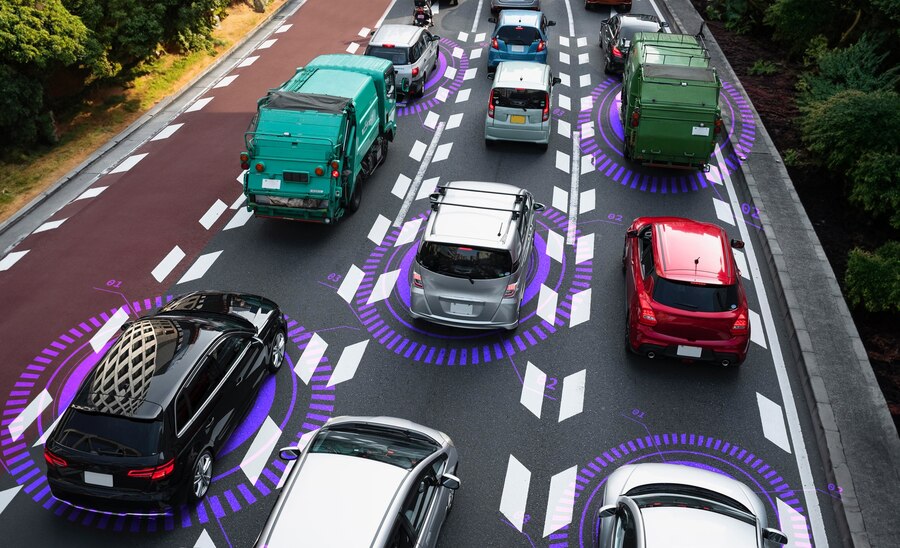Smarter Logistics: Unlock The Potential Of Real-Time Vehicle Monitoring
5 Mins Read
Published on: 01 November 2023
Last Updated on: 20 December 2024

Various transit agencies across the globe are incorporating advanced technologies known as intelligent transport systems (ITS) to significantly improve areas of their operations.
Among the systems being used, several agencies are now incorporating real-time vehicle monitoring to unlock the full potential of their transport network.
What Is Real-Time Vehicle Tracking System?
The real-time vehicle tracking system uses the computational power of the GPS and is one of the prominent names in the automobile industry. The system monitors the location and vehicle of a car in real-time.
This data is then used to observe the real-time movement of the car. This visual representation is used to monitor multiple cars at the same time and to understand the overall situation of a given road.
Apart from that, the system is used for speed control and surveillance. All of these features enhance and make driving a more accessible act. A real-time vehicle tracking system is not just used for monitoring, but it is also used for prevention. Therefore making it an integral part of nowadays.
Types Of Real-Time Vehicle Tracking
There are several benefits of real-time vehicle tracking. We will eventually get to those. However, we should also discuss the types. This should help you understand what you need.
In this section, we will point out three primary types of real-time vehicle tracking systems that are out there. All of these systems offer different levels of accessibility.
Hence, here is a small rundown of all the different types of real-time vehicle systems that you need to know.
Passive Tracking System
This is the most common vehicle tracking system in existence. This form of GPS tracking stores data in the GPS unit and transmits it accordingly. This system is more archaic than the other variants we will discuss.
This system is best suited for businesses that do not need direct and real-time data tracking. However, it can help businesses track the car in its own way.
Active Tracking Systems
Next in line is called the active tracking system. An active tracking system uses real-time data to monitor your vehicle precisely. This is a more advanced form of vehicle tracking system.
The active real-time vehicle tracking system is very important and useful, as it offers a real-time visual representation of the movement of your car and its location.
This is integral to businesses that need active and real-time tracking. Therefore, this is a very important means of vehicle tracking system.
Hybrid Tracking Systems
This is another very new and important means of real-time vehicle tracking system. This is like the best of both worlds. The tracking system tracks actively as well as passively.
This allows the system to track and record data as well as look at the real-time movement of a car. This is one of the most prominent variations of data tracking as it allows businesses to keep a detailed record pof GPS data.
This is mostly prominent in the delivery industry, which deals with sensitive goods and delivery.
What Does This Look Like?
Using real-time vehicle monitoring in your transit agency allows you to accurately track the vehicles in your fleet as they complete journeys.
Whether it’s buses, trams, or trains, real-time vehicle monitoring can relay accurate positional information for your vehicles straight to your command center.
This is achieved through advanced devices located on board the vehicles, which monitor things such as location, position, speed, distance from the next stop, and more.
More importantly, this information is gathered, analyzed, and delivered in real time, so you have a clear overview of your vehicles’ positions at all times – and any changes are reflected immediately.
When it comes to unlocking your transit agency’s full potential, this type of ITS is crucial…
Full Visibility For Your Transport Network
Real-time vehicle monitoring offers you full visibility over your transport network and all the vehicles active in your fleet each day.
This provides an accurate awareness of any changes or issues that need addressing when it comes to running your operations smoothly.
For instance, you’ll be able to identify if any vehicles need to be diverted along an alternate route due to stationary traffic, or if one of your vehicles isn’t moving due to a breakdown.
With complete visibility from your command center, you’ll remain in control of every aspect of your operations, allowing for more prompt adjustments and resolutions for whatever may arise.
Increased Journey Efficiency

Incorporating real-time vehicle monitoring into your transport network can also help to increase journey efficiency.
This ITS can analyze things such as vehicle location against the surrounding traffic or potential road closures.
As a result, you can receive suggestions for preferable routes that will help your vehicle reach the next stop in good time.
This can help keep each journey running efficiently, for an increase in both driver and rider satisfaction.
Improved Handling Of Rider Demand
Meeting rider demand is also important for achieving the full potential of your transit agency, and real-time vehicle monitoring can help with this.
This type of ITS can show you the predicted arrival times of each vehicle at a stop, due to accurate vehicle monitoring.
You can then receive suggestions on the best times for each vehicle to arrive at each destination, so there isn’t too long or too short of a wait between each vehicle at one stop.
This can avoid large build-ups of riders at a stop, which usually leads to an inefficient way of meeting demand, giving riders an unenjoyable experience.
By utilizing ITS, such as real-time vehicle monitoring in your transit agency. You can begin to unlock the full potential of your transport operations and deliver a more effective service to riders.
The Final Thought
In summation, this is what you need to know and understand about real-time vehicle tracking system(s).
They are really helpful and can really make things easy for businesses that need real-time data tracking.
Therefore, if your business is one of them, then you can use this system. Thank you, and have a great day ahead.
Read Also:


















Comments Are Closed For This Article